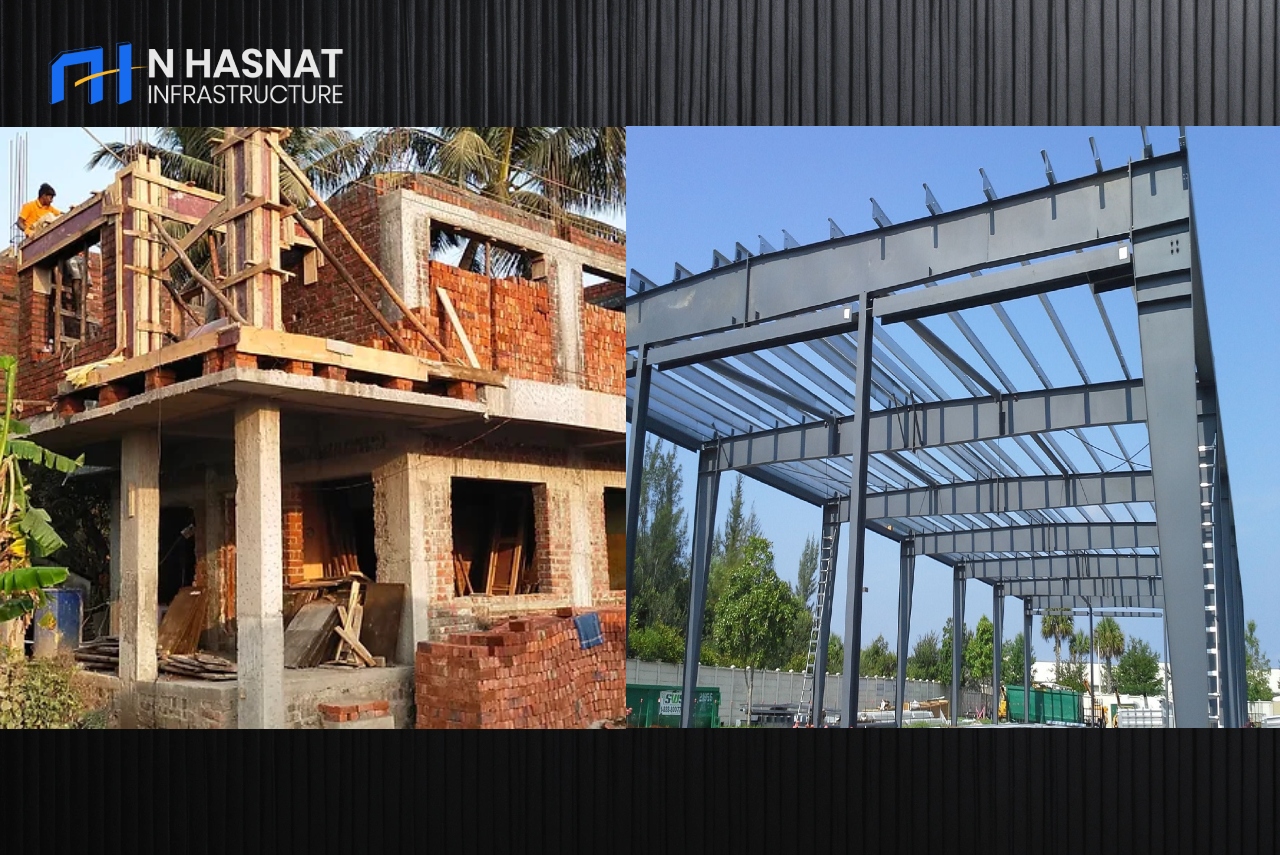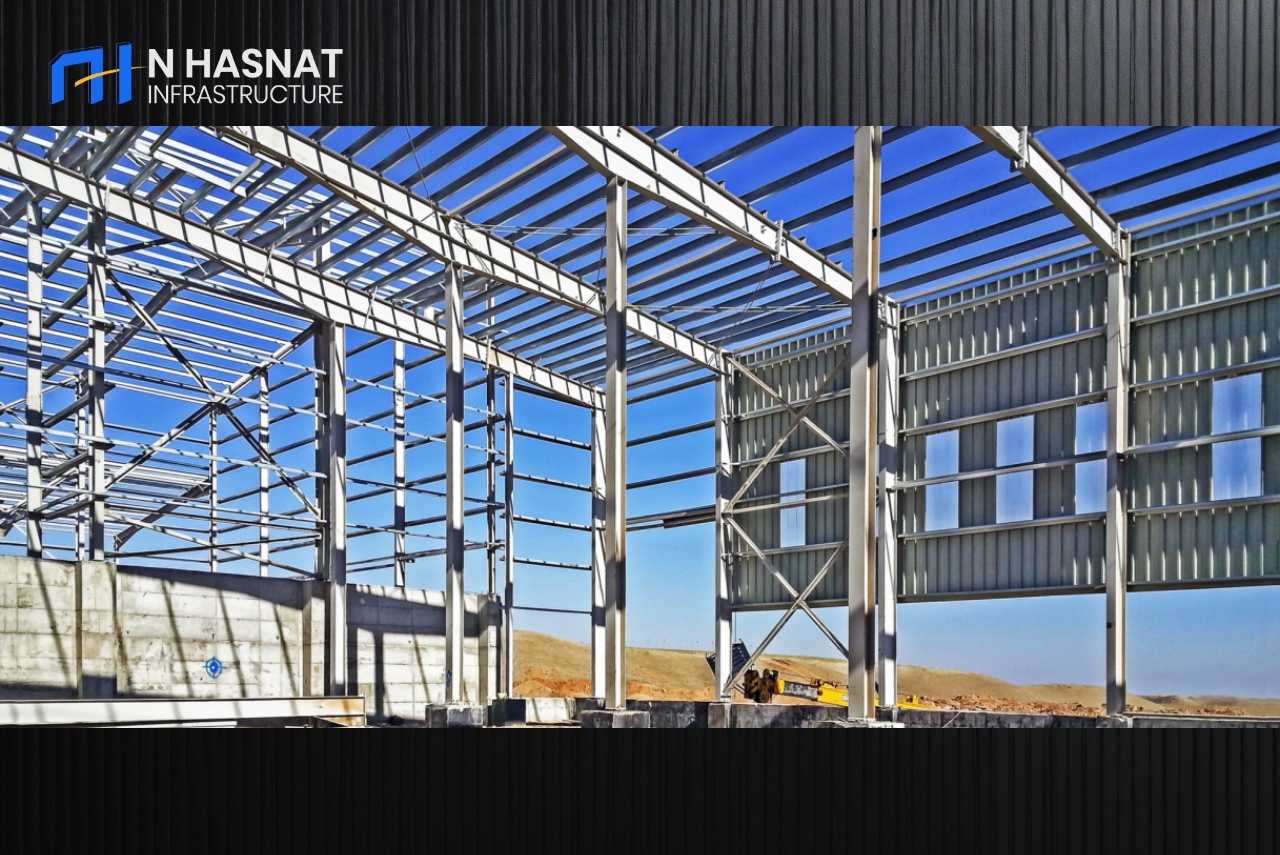
◈ Why Are Steel Structures Better than RCC for Construction
When it comes to constructing buildings, bridges, and various other structures, engineers and architects have two primary options: reinforced concrete (RCC) and steel. Both materials have their advantages and are suitable for different applications. However, steel structures often stand out as the superior choice in many scenarios due to their unique characteristics and benefits. In this article, we'll delve into the reasons why steel structures are often preferred over RCC in construction.
Strength and Durability
1. Superior Strength
Steel is renowned for its exceptional strength-to-weight ratio. This means that steel structures can withstand heavy loads and stresses while remaining relatively lightweight. This characteristic is particularly advantageous in skyscraper construction, where the weight of the building materials can significantly affect the foundation's size and cost.
2. Enhanced Durability
Steel is highly resistant to many environmental factors that can deteriorate other construction materials. It is corrosion-resistant, which makes it an excellent choice for structures in coastal or industrial areas where moisture and salt can wreak havoc on RCC. Moreover, steel structures have a longer lifespan, reducing the need for frequent maintenance and replacements.
Speed of Construction
1. Faster Construction Time
One of the most significant advantages of steel structures is the speed of construction. Steel components are usually fabricated off-site and then assembled on-site, reducing construction time significantly. This not only saves time but also minimizes disruption to the surrounding area and community. For projects with tight deadlines, such as emergency response centers or infrastructure repair, steel is often the preferred choice.
2. Precision and Predictability
Steel components are manufactured with high precision in controlled factory environments, ensuring consistency and quality. This level of predictability is invaluable for meeting project deadlines and budget constraints, as it reduces the chances of unexpected delays due to material variations.
Flexibility and Adaptability
1. Versatility in Design
Steel's flexibility allows for intricate and innovative architectural designs that may be challenging to achieve with RCC. Engineers and architects can push the boundaries of creativity while maintaining structural integrity, resulting in iconic and visually appealing structures.
2. Easy Modifications
Steel structures are relatively easy to modify or expand upon. This adaptability is essential in situations where the building's purpose changes over time, or when additions are necessary. For instance, commercial buildings may need to accommodate new equipment or office spaces, and steel structures allow for these changes with minimal disruption.

Sustainability and Environmental Benefits
1. Recyclability
Steel is one of the most recycled materials globally, making it an environmentally friendly choice. The recycling process does not compromise its structural integrity, reducing the demand for virgin steel production and conserving natural resources.
2. Reduced Waste
Steel structures generate less construction waste compared to RCC, where formwork and concrete excess can lead to substantial wastage. This aligns with the growing global emphasis on sustainable construction practices.
Cost Efficiency
1. Cost Savings Over Time
While the upfront cost of steel may be higher than RCC, the long-term savings often outweigh this initial investment. Steel's durability, minimal maintenance requirements, and energy-efficient properties result in reduced operational costs and a higher return on investment over the structure's lifespan.
Conclusion
Steel structures offer a multitude of benefits that make them a preferred choice over RCC in many construction applications. Their superior strength, durability, speed of construction, flexibility, sustainability, and cost-efficiency make them a viable option for various projects, from skyscrapers to bridges and industrial facilities. While RCC still has its place in construction, steel's unique properties make it a top contender for builders and developers seeking a reliable and efficient construction material.
For more information on steel structures and their advantages, you can explore resources from reputable organizations like the American Institute of Steel Construction (AISC) and The Steel Construction Institute (SCI).
In summary, when it comes to building for the future, steel stands tall as a material that combines strength, durability, sustainability, and versatility, making it the preferred choice for many construction projects worldwide.
